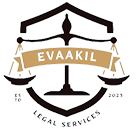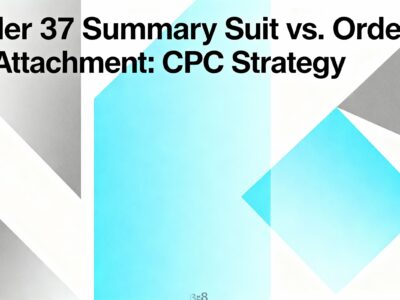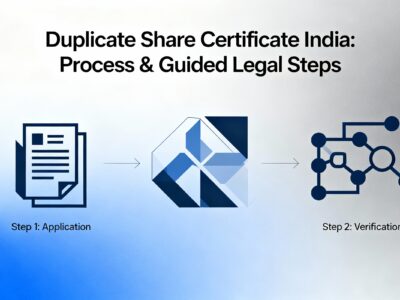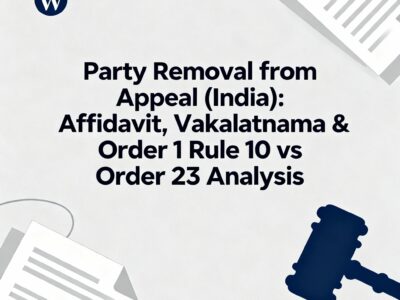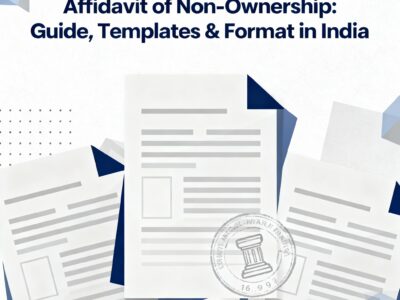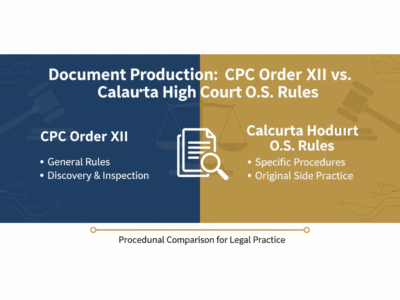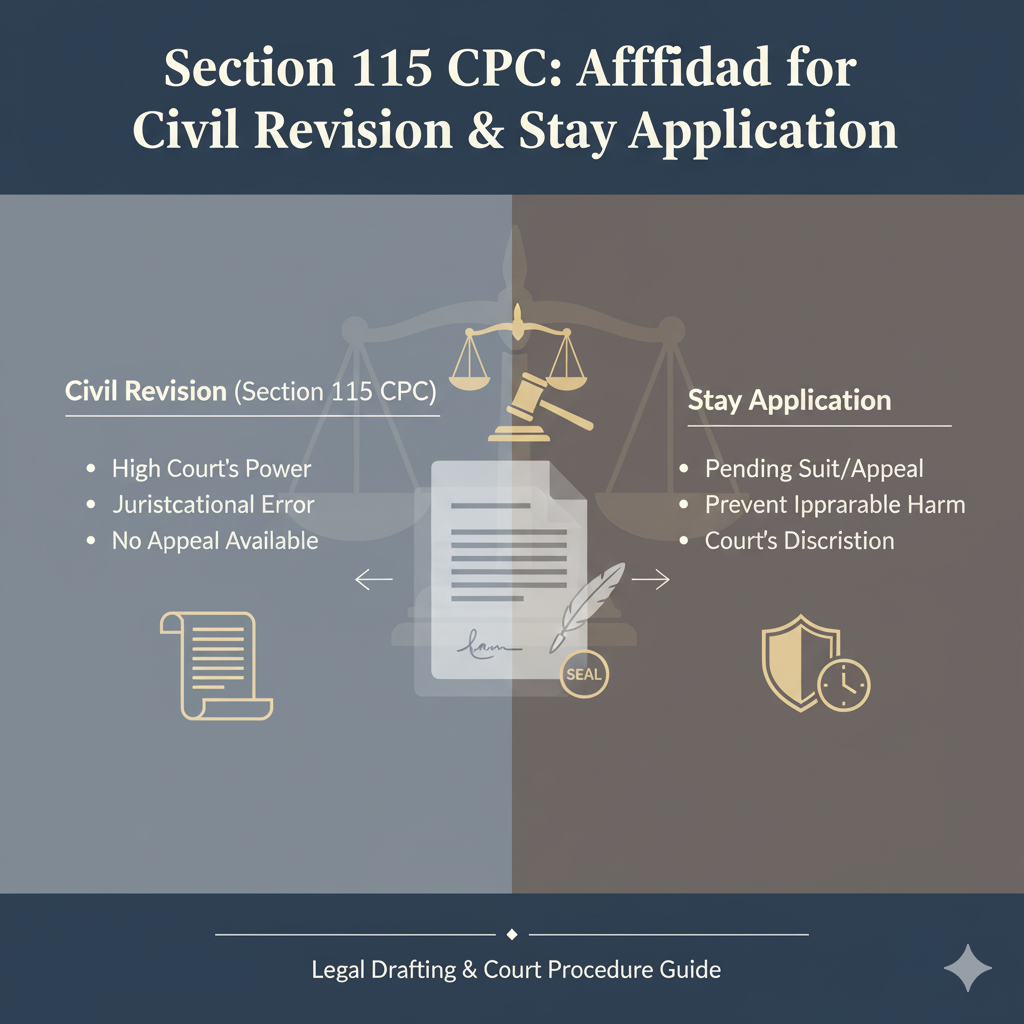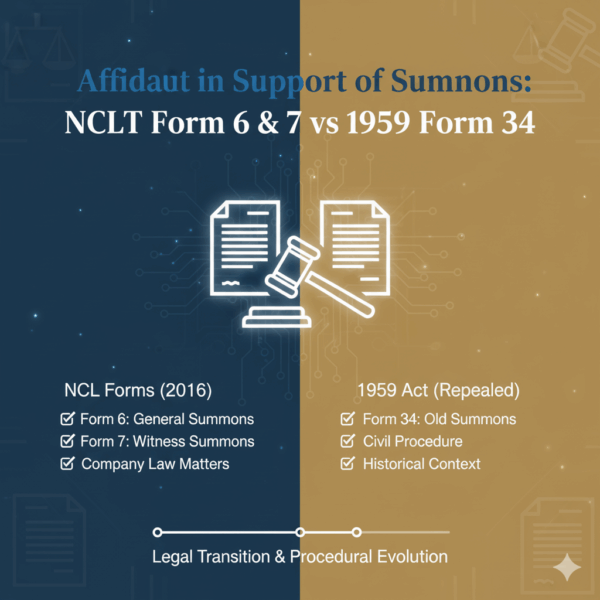Many legal practitioners still encounter the historical “Affidavit in support of the Summons for Directions,” often referencing Form 34 or Section 393. This guide clarifies that this procedure under the Companies Act, 1956, is obsolete.
We directly compare the old High Court process with the current NCLT procedure under the Companies Act, 2013. Understanding the critical shift from the substantive Form 34 affidavit to the modern Form NCLT-1 application (supported by the simple Form NCLT-6) is essential for any successful “First Motion” application for a corporate arrangement or compromise under Section 230.
Affidavits in Support of Applications for Directions: A Guide
From the Companies Act, 1956 (Section 393) to the Companies Act, 2013 (Section 230)
Published by Evaakil Legal Research | Last Updated: October 31, 2025
The procedure for seeking court or tribunal approval for corporate arrangements, like mergers or restructurings, has fundamentally changed in India. A common point of confusion for practitioners is the format and purpose of the "Affidavit in support of the summons for Directions," particularly with references to the old Section 393.
This guide clarifies the procedural evolution. We examine the historical practice under the Companies Act, 1956, and compare it directly to the current, mandatory procedure under the Companies Act, 2013. Understanding this shift from the High Court to the National Company Law Tribunal (NCLT) is essential for modern corporate practice.
Explore the Regimes
Use the buttons below to toggle between the historical 1956 framework and the current 2013 framework.
Modern Practice: The NCLT Regime (Companies Act, 2013)
Today, all applications for compromises and arrangements are filed with the National Company Law Tribunal (NCLT) under Section 230 of the Companies Act, 2013. The old "Summons for Directions" is obsolete.
Modern 'First Motion' Workflow (Section 230)
File Form NCLT-1
This is the main, substantive application. It contains all facts, financials, the scheme, and all disclosures required by Sec 230(2).
Attach Form NCLT-6
This is the "affidavit in support." Its *only* purpose is to verify, under oath, that the contents of the NCLT-1 application are true.
Obtain NCLT Directions
The NCLT reviews the NCLT-1 and issues directions for convening stakeholder meetings, advertisements, and notices.
Key Disclosures Now in Form NCLT-1
Under Section 230(2), the NCLT-1 application must now contain all the substantive facts that the NCLT needs to make a decision. The affidavit's old job is now done by the application itself. Key mandatory disclosures include:
- The latest financial position of the company (audited financials not more than 6 months old).
- A valuation report prepared by a registered valuer.
- Details of any pending investigation or proceeding against the company.
- The effect of the scheme on shareholders, creditors, and key managerial personnel.
- A statement on how the interests of creditors are being protected.
The Great Shift: Substance vs. Verification
The most significant change is the migration of substance. Under the 1956 Act, the affidavit (Form 34) was the "speaking" document containing all the facts.
Under the 2013 Act, the application (NCLT-1) is the "speaking" document. The affidavit (NCLT-6) is a simple, non-substantive form just for verification. All mandatory disclosures from the old Section 393 are now part of the NCLT-1 application itself, as required by Section 230(2).
Interactive Chart: Where is the Substance Filed?
This chart visualizes the procedural shift. Note how the "substance" (the facts, financials, and rationale) moved from the affidavit to the application itself.
At-a-Glance Comparison: 1956 vs. 2013
| Procedural Element | Historical Regime (Companies Act, 1956) | Modern Regime (Companies Act, 2013) |
|---|---|---|
| Jurisdiction | High Court | National Company Law Tribunal (NCLT) |
| Governing Provisions | Sec. 391 (Power) & Sec. 393 (Disclosure) | Sec. 230 (Consolidated Provision) |
| Governing Rules | Companies (Court) Rules, 1959 | NCLT Rules, 2016 & CAA Rules, 2016 |
| Initial Application Form | Form No. 33 (Judge's Summons) | Form No. NCLT-1 (Application) |
| Supporting Affidavit | Form No. 34 (Substantive, "Speaking" Affidavit) | Form No. NCLT-6 (Verificatory Affidavit) |
| Location of Disclosures | Explanatory Statement (sent *after* directions) | Within the NCLT-1 Application (filed *at the start*) |
The Legal Bedrock: What is an Affidavit?
At its core, an affidavit is simply written testimony. It is a formal statement of facts made voluntarily by an individual (the deponent) under an oath or affirmation administered by a person legally authorized to do so.
- Purpose: Its main purpose is to present factual evidence to a court or tribunal without the deponent having to appear and give oral testimony at that stage.
- Legal Weight: Because it is sworn under oath, a false statement in an affidavit can subject the deponent to penalties for perjury.
- In This Context: The Form 34 affidavit was the company's primary evidence to the High Court, proving it had met the initial requirements to proceed with a scheme.
What 'Directions' Were Being Sought?
The "Summons for Directions" (Form 33) and its supporting affidavit (Form 34) were not asking the court to approve the final scheme. They were asking for the initial procedural orders—the "directions"—on how to convene the necessary meetings. These typically included orders for:
- The date, time, and place for the meetings of different classes of shareholders and creditors.
- The appointment of a Chairperson (and often an Alternate Chairperson) for these meetings, who would then report the results back to the court.
- The quorum required for each meeting to be valid.
- The method of voting to be used (e.g., poll, ballot).
- Directions for advertising the meeting notice in specific newspapers (e.g., one English, one vernacular) to ensure public notification.
- The deadline for the company to dispatch the formal notices and explanatory statements to all stakeholders.
A Common Pitfall: Two Different Affidavits
Do not confuse the affidavit *starting* the process with the one *ending* it. They serve different purposes.
1. Affidavit in Support (Form NCLT-6)
When is it filed? At the very beginning, along with the NCLT-1 application.
What is its purpose? To verify under oath that the contents of the main application (NCLT-1) are true. It is a simple, non-substantive document.
2. Affidavit of Compliance / Service
When is it filed? After stakeholder meetings are held, but *before* the final hearing (Second Motion).
What is its purpose? To prove to the NCLT that all its directions (newspaper ads, notice dispatch, etc.) were followed correctly. This is a mandatory step.
Historical Legal Format: Affidavit (Form 34)
For historical reference, here is the text and structure of the Form 34 affidavit, as prescribed under the Companies (Court) Rules, 1959. This is the specific format your research document outlines.
[See Rule 38]
IN THE HIGH COURT AT.............
Company Petition No. ………. of 20…….
Affidavit in support of the petition and the summons for Directions
I, [Full Name], solemnly affirm and say as follows:-
- I am the Chairman of the Board of Directors / a Director / [Other Position] of the abovenamed company, and I have been a director of the company since [Date].
- I have read the petition now shown to me and marked '[Exhibit Mark]' and state that the statements made in paragraphs 1 to 10 thereof are correct and true to my knowledge.
- The printed copy of the memorandum and articles of association with a copy of every special resolution of the company now in force and annexed thereto (other than the special resolution referred to in the petition), now shown to me and marked '[Exhibit Mark]' is a true and correct copy of the said memorandum and articles.
- The general meeting referred to in paragraph 6 of the petition was duly conveyed in pursuance of the notice now shown to me and marked '[Exhibit Mark]'. A copy of this notice was duly sent out to all the shareholders in accordance with the provisions of the Act and the articles of association.
- I was the Chairman (or was present) at the meeting held in pursuance of the said notice at which the special resolution referred to in paragraph 6 of the petition was passed (or Shri [Name] was the chairman of the meeting). The said resolution was duly passed in accordance with Section 189 of the Companies Act, 1956, unanimously (or by a majority of [Number] votes against [Number] votes). The book now produced and shown to me and marked '[Exhibit Mark]' is the Minute Book of the Company, containing minutes of proceedings at general meetings of the company, and the proceedings of the meeting held on the said [Date] day of [Month], 20[Year], have been correctly recorded therein.
- It is prayed that directions may be given as to the date of the hearing and the advertisement of the petition.
Solemnly affirmed etc.
(Sd) [Deponent's Signature]
Frequently Asked Questions (FAQs)
Can I still use the old Form 34 affidavit for an NCLT filing?
No, absolutely not. The Companies (Court) Rules, 1959, and their associated forms (like Form 33 and 34) are obsolete for this procedure. Filings must be made with the NCLT using the forms prescribed by the NCLT Rules, 2016, and the Companies (Compromises, Arrangements and Amalgamations) Rules, 2016. Using the old forms will result in a defective application.
What is the difference between the "First Motion" and "Second Motion"?
The "First Motion" is what this guide discusses: the initial application (NCLT-1) asking the NCLT to issue *directions* for convening meetings.
The "Second Motion" is the final petition filed *after* the shareholder and creditor meetings have been successfully held. This second application asks the NCLT to formally *sanction* the scheme, making it legally binding on all parties.
Who is authorized to sign the new NCLT-6 affidavit?
The NCLT-6 affidavit, which verifies the contents of the NCLT-1 application, is typically signed by a Director, the Company Secretary, or another Key Managerial Personnel (KMP) of the company. The person signing must be duly authorized by a resolution of the Board of Directors to make such declarations on behalf of the company.
Final Points for Practitioners
- Any reference to "Summons for Directions" or "Form 34" is historical. Relying on this procedure will lead to a defective filing.
- The current procedure is to file Form NCLT-1 (the substantive application) supported by Form NCLT-6 (the simple verificatory affidavit).
- All disclosures required by Section 230(2) (financials, valuation, investigations) must be included in the NCLT-1 application at the first motion stage.
